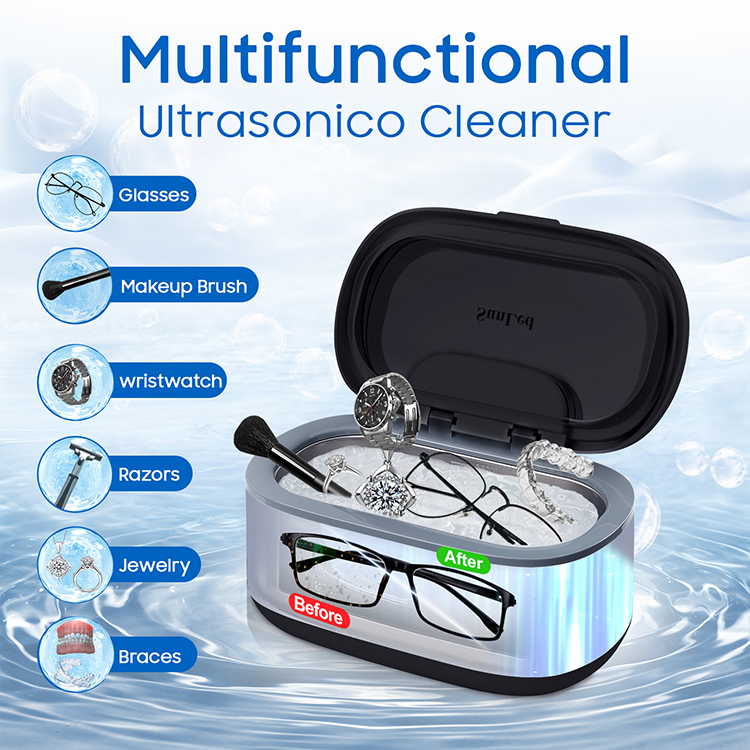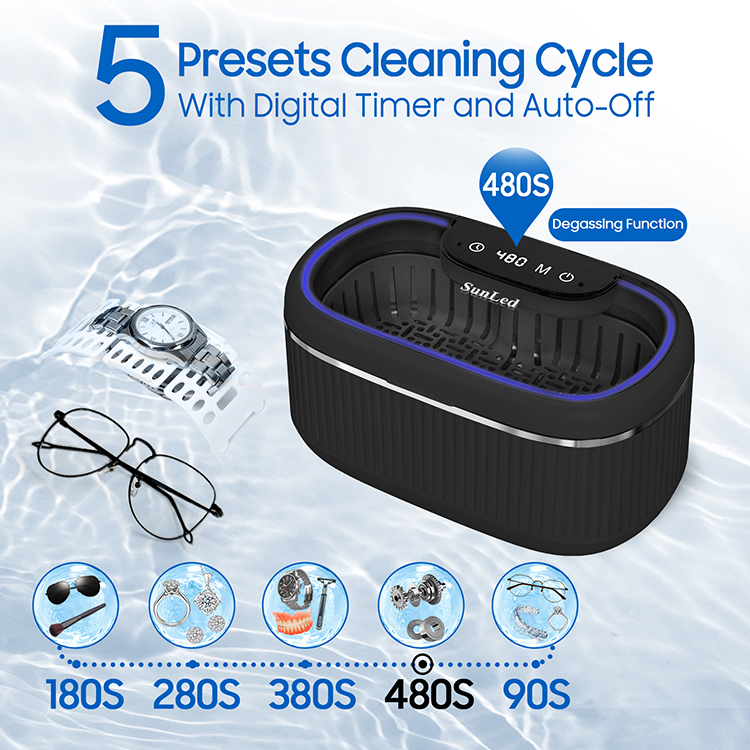In recent years, ultrasonic cleaning technology has gained significant attention in Europe and the United States as a convenient and effective method for household cleaning. Instead of relying solely on manual scrubbing or chemical detergents, ultrasonic cleaners use high-frequency sound waves to create microscopic bubbles in a liquid solution. When these bubbles collapse, they generate a scrubbing effect on surfaces, dislodging dirt, oil, and other contaminants. This process, known as cavitation, makes it possible to clean intricate items such as jewelry, eyeglasses, dental tools, or mechanical parts with remarkable efficiency.
While the appeal of ultrasonic cleaners is obvious—fast, effective, and often capable of reaching areas that traditional cleaning methods cannot—consumers should be aware that not everything is suitable for ultrasonic cleaning. In fact, certain items may suffer irreversible damage if placed in the device, while others could even pose safety risks. Knowing what should never go into an ultrasonic cleaner is essential for ensuring safe use and protecting valuable belongings.
One of the most common mistakes made by new users is attempting to clean fragile gemstones. While diamonds and hard gems typically handle ultrasonic cleaning well, softer or porous stones like emeralds, opals, turquoise, amber, and pearls are highly vulnerable. The vibrations can cause micro-cracks, fading, or discoloration, reducing the stone’s value and aesthetic appeal. Antique jewelry or items with glued settings are also at risk, as adhesives tend to weaken under the cleaning process. For such delicate objects, professional cleaning or gentler methods are strongly recommended.
Another category of unsuitable items includes materials that are inherently soft or coated. Plastics, leather, and wood can warp, scratch, or lose their finish when exposed to ultrasonic cleaning. Items with paint or protective coatings are especially problematic. The cavitation effect may strip away layers of paint, lacquer, or protective film, leaving the surface uneven or damaged. For example, cleaning painted metal tools or coated spectacle lenses in an ultrasonic cleaner could result in peeling or cloudiness, effectively ruining the item.
Electronics represent yet another area of concern. Small gadgets such as smartwatches, hearing aids, or wireless earbuds should never be submerged in an ultrasonic bath, even if they are marketed as “water-resistant.” Ultrasonic waves can penetrate protective seals, damaging delicate circuits and causing irreparable malfunctions. Likewise, batteries must be kept away from ultrasonic cleaners at all times. Immersing batteries not only risks short-circuiting but could also lead to leakage or, in extreme cases, fire hazards.
Consumers should also avoid placing flammable or combustible materials inside an ultrasonic cleaner. Cleaning items that contain gasoline, alcohol, or other volatile residues can be extremely dangerous. The heat generated by the device, combined with cavitation effects, may trigger chemical reactions or explosions. To maintain safety, ultrasonic cleaners should only be used with compatible cleaning solutions specifically recommended by manufacturers.
It is also worth noting that not all personal care products are suitable for ultrasonic cleaning. While durable items like metal razor heads, stainless steel dental tools, or toothbrush attachments may benefit, delicate cosmetic accessories made from sponge, foam, or porous plastics should be avoided. These materials tend to absorb liquid and may degrade rapidly when exposed to ultrasonic energy.
Despite these restrictions, ultrasonic cleaning remains an invaluable household tool when used correctly. Jewelry made from gold, silver, or platinum (without delicate stones), stainless steel instruments, eyeglasses without specialty coatings, and durable metal tools can all be cleaned quickly and thoroughly. The ability to restore items to near-original condition without harsh chemicals or labor-intensive scrubbing is one of the reasons ultrasonic cleaners are becoming increasingly common in modern homes.
As with many household technologies, the key to safe and effective use lies in selecting the right device. Consumers in Europe and the United States are showing growing interest in user-friendly ultrasonic cleaners designed specifically for home applications. Among the products available on the market, the Sunled Ultrasonic Cleaner has established itself as a reliable choice for households.
The Sunled Ultrasonic Cleaner is designed not only for performance but also for versatility. It comes equipped with three adjustable power levels and five timer settings, giving users precise control over the cleaning process. The addition of an automatic ultrasonic cleaning mode with a degas function ensures thorough and safe cleaning, even for delicate items.
The device operates at 45,000 Hz ultrasonic frequency, delivering powerful 360° cleaning that reaches every corner of an object, removing dirt and contaminants with ease. Its wide range of applications makes it suitable for jewelry, glasses, watches, personal care items, and even small tools, offering flexibility for everyday needs. To further ensure peace of mind, the Sunled Ultrasonic Cleaner is backed by an 18-month warranty, reflecting the company’s commitment to durability and customer satisfaction. With this combination of advanced features and thoughtful design, the Sunled Ultrasonic Cleaner not only provides professional-grade cleaning at home but also makes an ideal gift choice for family and friends.
Ultimately, ultrasonic cleaners should be viewed not as universal cleaning solutions but as specialized devices with defined applications. By understanding which items are safe and which should never be placed inside, consumers can maximize the benefits of the technology while avoiding unnecessary risks. For those seeking both safety and efficiency, investing in a product like the Sunled Ultrasonic Cleaner offers peace of mind and long-term value.
As household cleaning technology continues to evolve, ultrasonic cleaning is likely to become even more widespread. With growing consumer awareness and careful product choices, this innovative method has the potential to redefine everyday cleaning practices—making homes not only cleaner but also more efficient and environmentally friendly.
Post time: Sep-24-2025


